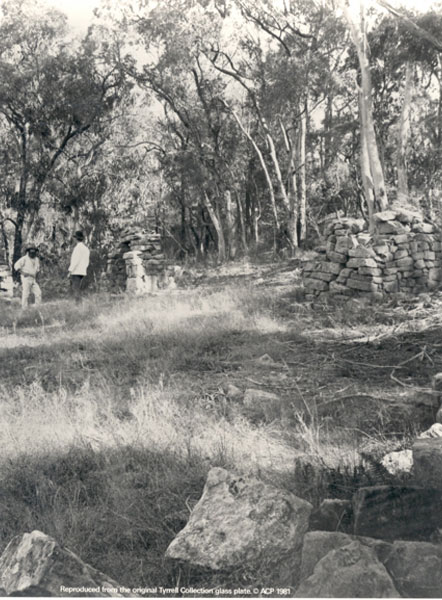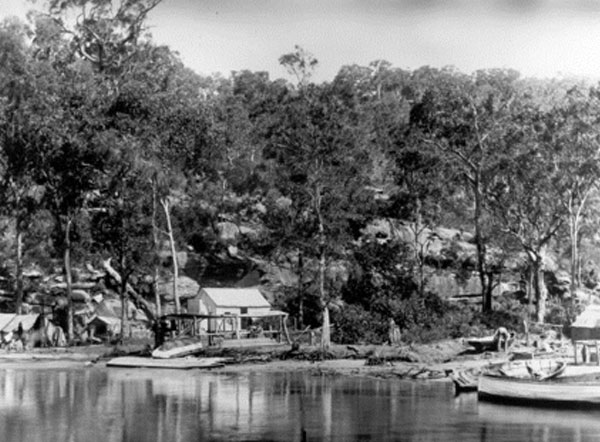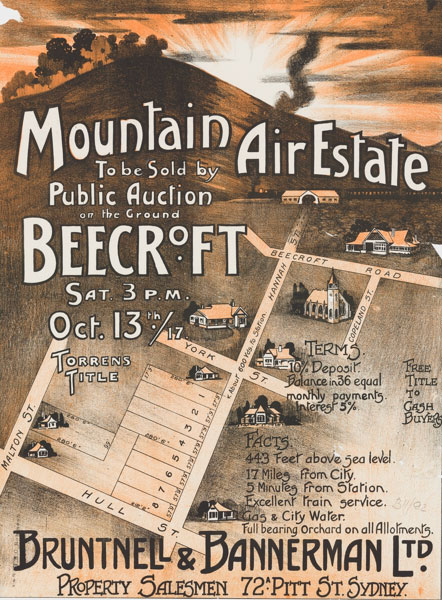Community Consultation—Archaeological and Landscape Heritage Studies
Hornsby Shire Council has a rich and diverse history, which is clear from its extensive archaeological resources and landscape heritage items. It has been nearly 30 years since the last comprehensive study of the Shire’s heritage resources. An ‘Archaeological Heritage Study’ and a ‘Landscape Heritage Study’ are currently being prepared and provide exciting opportunities to revisit and explore the heritage features that have helped shape the Shire. Both studies are being prepared by Extent Heritage, with the Archaeological Heritage Study to be completed by mid-2021 and the Landscape Heritage Study to be completed near the end of 2021.
Input from the local community is critical to the success of both projects so that we understand what is significant to the Shire’s residents and why.
Please see the FAQs below or contact the team at projects@extent.com.au for more information about these projects.
Hornsby Archaeological Heritage Study
Hornsby Shire Council is currently preparing an Archaeological Heritage Study to assist with identifying and managing Council’s historical archaeological resources. This study will inform Council’s future Local Environmental Plan (LEP) and Development Control Plan (DCP) reviews. The Archaeological Heritage Study will be developed with reference to the Thematic Heritage Study (due for completion mid-2021) and Hornsby Shire Heritage Action Plan (2019) prepared by GML Heritage. The studies are part of a wider suite of heritage studies being prepared by Council under a four-year Comprehensive Heritage Study Programme.
It has been nearly 30 years since Edward Higginbotham prepared an archaeological assessment for Hornsby Shire Council to inform the 1993 Heritage Study. Given the suite of development in some parts of the LGA, this study provides an opportunity to revisit these previously recorded sites and extend new protections to previously unidentified sites.
An Archaeological Heritage Study looks at a broad area and considers its potential for historical archaeological sites, as well as their likely levels of significance, with identified sites being considered for listing in the next version of the Hornsby Shire Local Environmental Plan (LEP). It also provides clear policies and recommendations to ensure that significant archaeological remains are identified and appropriately managed during the development process.
While it may not capture every archaeological site across the Shire, it will try to locate and map the earliest sites and those identified as being most significant by the local community. This is where we need the community’s assistance to understand what is most important to local residents and why.
The objectives of the Archaeological Heritage Study are to:
- Review currently listed archaeological sites and confirm if the listings are still relevant;
- Identify new archaeological sites through the assessment of historical studies, aerials, and maps, as well as consultation with the local community;
- Assess the current condition of select archaeological sites;
- Develop an inventory sheet for every archaeological site included in the study;
- Complete digital mapping to provide site locations to Council; and
- Make recommendations to ensure the appropriate management of significant archaeological sites, including input into the next Hornsby Local Environmental Plan (LEP) and Development Control Plan (DCP).
If you have further information you would like to contribute (images, more detailed text), please email them directly to us at projects@extent.com.au.
Please note that submissions closed on Wednesday, 31 March 2021.
Yes—the project team is carefully assessing historical maps, plans and aerials to identify areas likely to contain significant historical archaeological sites that might be considered for listing. To be listed, the sites must have the potential for archaeological ‘relics’, as defined by the Heritage Act 1977 (NSW) (the Heritage Act).
Archaeological relics are afforded blanket protection under the provisions of the Heritage Act (Sections 139 through 146). Listing of identified archaeological sites will not change this protection but will reduce the uncertainty and delays associated with unexpected archaeological finds. Prior identification of archaeological sites will ensure that they are appropriately managed in the development process.
The Archaeological Heritage Study is being led by Extent Heritage. The project team is comprised of the following personnel:
Dr Jennifer Jones-Travers
Jennifer has over 16 years’ experience as a heritage practitioner, has worked as an archaeologist in consulting, government, and academic contexts and is a current member of the Tasmanian Heritage Council. She holds a PhD with a specialisation in Australian historical archaeology. Jennifer is skilled in preparing reports in support of all phases of archaeological investigations, including the assessment of archaeological potential and significance, research design, and post-excavation reporting. Jennifer is leading the project for Extent and providing technical input into all deliverables.
Graham Wilson
Graham is a highly experienced historical archaeologist with a wide range of excavation and survey experience, both in Australia and overseas. Graham has conducted a large number of assessments and excavations for a variety of clients, including small site owners, major development/construction companies, and state and Commonwealth government departments. He has worked on major state-significant historic sites, such as the convict sites of Port Arthur, Norfolk Island and Parramatta as well as a number of sites of local significance across regional NSW (eg: Ballina, Bega, Merimbula, Mullengandra, Tarcutta, etc). Graham is recognised by Heritage NSW, as an approved Excavation Director for both local and state significant sites in NSW; he has directed a number of local and state heritage–listed sites in Victoria and WA. Graham is providing specialist input into the Archaeological Heritage Study, including the identification of new sites and management recommendations.
Francesca McMaster
Francesca McMaster is a heritage advisor with a background working on various historical archaeological projects in NSW. She has an honours degree from the University of Sydney in Australian Archaeology and has worked in the industry for over three years. During her career, Francesca has been part of several large-scale projects within NSW, including sites of State and national heritage significance (Mt Victoria Train Station, Barangaroo, Robin Thomas Reserve, Parramatta, etc). Francesca has also been involved in preparing various heritage and impact assessments and reporting on archaeological excavations, including post-excavation data management. Francesca is working on all phases of the Archaeological Heritage Study.
The Archaeological Heritage Study is programmed for completion by mid-2021.
Hornsby Landscape Heritage Study
Hornsby Shire Council is currently preparing a Landscape Heritage Study to assist with identifying and managing Council’s cultural and natural landscapes. This study will collate the information from previous studies, review and assess the current heritage listed landscapes to inform Council’s future Local Environmental Plan (LEP) and Development Control Plan (DCP) reviews. The Landscape Heritage Study will be developed with reference to a wider suite of Heritage Studies concurrently being prepared by Council.
It has been nearly 30 years since William Aston prepared the Hornsby Shire Heritage Study Landscape Report, for the 1993 Heritage Study complied by Perumal Murphy Wu. Given the scale of development in some parts of the LGA, this study provides an opportunity to revisit these previously recorded areas and items and extend new protections to previously unidentified heritage landscapes.
The Landscape Heritage Study is a review of all natural and cultural landscape items listed on Schedule 5 of the Hornsby LEP, excluding National Parks. The Landscape Heritage Study intends to capture all cultural and natural landscapes and attributes that have heritage significance for listing in the Hornsby LEP and to provide greater detail and clarity around the landscape heritage of Hornsby Shire, as it exists today.
There are three broad categories, that are based on the World Heritage guidelines for cultural landscape types, that are applied to assess culturally significant landscapes. They offer a useful starting point for understanding landscapes.
- Designed landscapes are created intentionally. They include garden and parkland landscapes constructed for aesthetic reasons, such as trees, avenues, parks, gardens, cemeteries and plazas.
- Organically evolved or ‘vernacular’ landscapes have developed over time in response to, and association with the natural environment. Organically evolved landscapes often develop through changes brought about by patterns of use. They fall into two sub-categories: a relict landscape where an evolutionary process has ended; and a continuing landscape where the evolutionary process is still in progress. Organically evolved landscapes include farming landscapes, industrial landscapes such as goldfields, and linear landscapes such as railway lines.
- Associative landscapes are primarily based on religious, spiritual, artistic or cultural associations with the natural environment. Associative landscapes are often significant for their intangible, non-physical values associated with events, activities or significant people. They include landscapes such as explorers’ routes, Aboriginal places and river crossings or places where celebrations have occurred. They also include landscapes that have stories told about them. Documents and oral histories relating to what happened at the place are especially important in identifying and assessing how people interacted with these types of landscapes.
The purpose of this comprehensive review and development of an updated Landscape Heritage Study is to:
- Prepare a new comprehensive Landscape Heritage Study that captures all cultural and natural landscapes that have heritage significance for listing on Schedule 5 of the Hornsby Local Environmental Plan,
- A comprehensive review and consolidation of the previous landscape and heritage studies, as well as background material where necessary, including primary and secondary source material, libraries and historical collections, comprising of written records, maps, photos, local histories and other documents and backgrounds relating to the landscape and natural heritage of Hornsby.
- Review of all previously identified landscape heritage items and landscape components of heritage items and reassess significance.
- Identify any potential new cultural or natural landscape items.
- Provide updated inventory sheets and provide increased accuracy and detail.
- Provide information necessary for Council to meet its statutory obligations and management policies for the maintenance and protection of landscape heritage.
- The updated data and information are presented in an engaging, contemporary and usable format.
- Provide Council with recommendations for future management and planning.
If you have further information you would like to contribute (images, more detailed text), please email them directly to us at projects@extent.com.au.
Please note that submissions closed on Wednesday, 31 March 2021.
Yes – this Landscape Heritage Study will identify potential items for listing. The project team will carefully assess historical maps, plans and aerials to identify areas of potential cultural significance. The potential items will also be informed by a gap analysis of previous studies and targeted fieldwork.
The Landscape Heritage Study is being led by Extent Heritage and 33 Parallel Landscape Architects. The project team is comprised of the following personnel:
Eleanor Banaag, Senior Associate
Eleanor has worked in the heritage industry for over fifteen years and is highly skilled in heritage interpretation development, materials and built heritage conservation, heritage impact and planning control assessment and collection management. Eleanor has been involved in State significant urban developments, providing construction heritage management advice, impact assessment and materials conservation recommendations. Eleanor was critically involved in undertaking the Cumberland Council Heritage Review, which involved the reassessment of approximately 350 individual heritage items and HCAs, and the assessment of over 150 potential new heritage items. She also prepared a maintenance and repair guidelines for Council-owned heritage assets for Wingecarribee Shire Council.
Eleanor will project manage the delivery of the Landscape Heritage Study.
Kim Watson, Heritage Advisor
Kim is a heritage advisor with a background on working on various built heritage projects in NSW. She has a Masters degree in Heritage Conservation from the University of Sydney and has worked in the industry for over four years. During her career, Kim has been a part of several large-scale projects within NSW including sites of local and state heritage significance. She has developed a wide range of skills in historical research, heritage impact assessments and field survey. She has experience in producing Photographic Archival Recordings, Statements of Heritage Impacts, Conservation Management Plans, Moveable Heritage Audits and Heritage Studies. She has worked on several large multi phased projects such as the Sydney Trains Signal Box Movable Schedules, Mount Victoria Conservation Management Plan, Cumberland Council Heritage Study, and Randwick Heritage Study.
Kim is working on all phases of the Landscape Heritage Study.
Darren Mansfield, 33 Parallel Landscape Architects
Darren’s experience as a Landscape Architect covers a wide range of projects from landscape scenic assessments through to major road and rail infrastructure, airports, embassies, campuses, parks and resorts. He has directed the planning and design of significant public and private landscapes locally, nationally and internationally and brings a deep technical understanding, design experience and leadership to projects.
He brings a strong sustainability ethic to his work including those with water sensitive urban design components and has co-authored the Roads and Maritime Service’s Water Sensitive Urban Design Guidelines. He is also the author of a book on Australian rainforest plants. His experience covers all aspects of project delivery from concept design to drawing and specification coordination, consultant coordination, programming, design and material selection, production drawings, reports, and construction administration.
Darren is working on all phases of the Landscape Heritage Study.
The Landscape Heritage Study is projected to be completed by late-2021.
Have Your Say
Further information (images, more detailed text) can be emailed directly to the consultant at projects@extent.com.au
Submissions closed on Wednesday, 31 March 2021.
In-person Workshops
The community is invited to attend a consultation workshop for both projects, on Wednesday 24 March 2021 at the Hornsby RSL (4 High Street, Hornsby) from 10am to 3pm.
The Archaeological Heritage Study session will run from 10am to 12pm.
The Landscape Heritage Study session will run from 1pm to 3pm.
Light lunch will be served between the two sessions.
RSVP to projects@extent.com.au or call 02 9555 4000 to which session(s) you will be attending.
RSVPs must be received by 17 March 2021.
Digital Workshops
For participants unable to attend the in-person workshop, there will be a digital workshop through Zoom for each study to allow community members to have their say:
Landscape Heritage Study
Digital Community Consultation Workshop—Tuesday 23 March 2021, 6pm to 8pm
Archaeological Heritage Study
Digital Community Consultation Workshop—Thursday 25 March 2021, 6pm to 8pm
RSVPs must be received by 17 March 2021.











